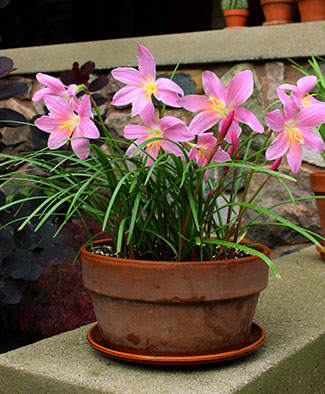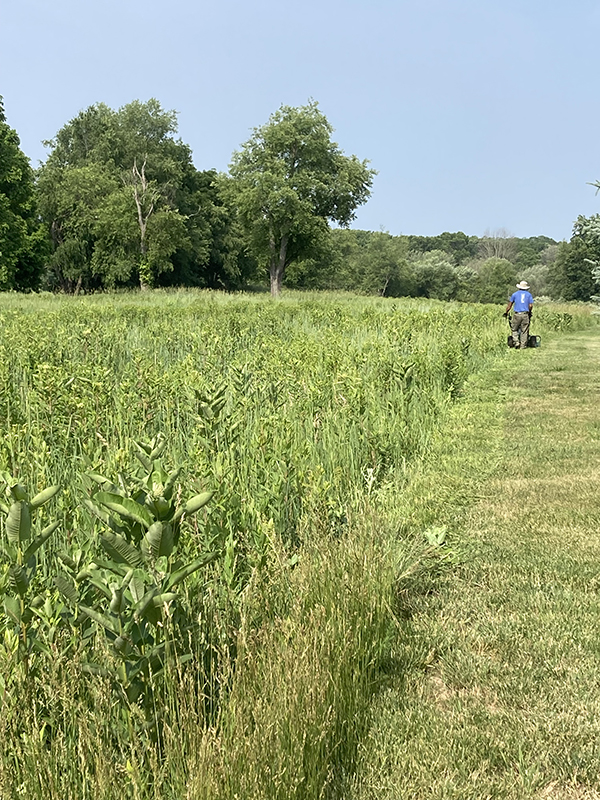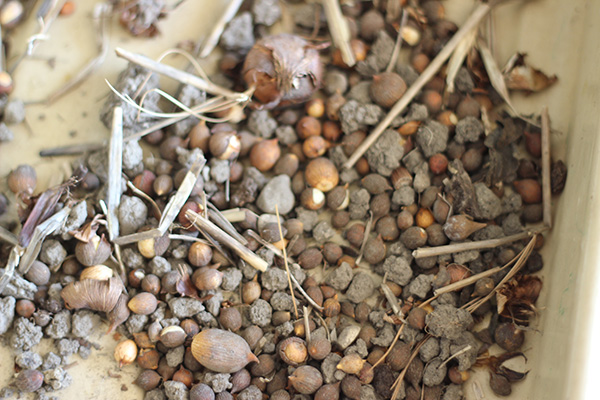
Dead-Heading Iris and Peonies – Cutting faded blooms redirects your plants’ energy from seed-making to future growth and bloom. Cut down iris bloom-stalks (not individual leaves) as close as possible to the rhizome, but cut back peony bloom-stalks no more than is needed to make the plant look good.
Growing Bulbs in Pots – Container gardening is great, but it’s not the same as growing bulbs in the ground. For the best results, see our Bulbs in Pots page.
Multiplying Your Rarest Tulips – In most gardens, the best way to give your rarest tulips the dry summer rest they need is to dig them up after the foliage yellows and store them in a dry, well-ventilated place – maybe hanging in mesh bags from the rafters in your basement or garage. Then put a note on your calendar so you don’t forget to replant them in the fall!
Staking Dahlias – For a bushier plant, pinch out the center shoot after three or four sets of leaves develop. Although dahlias grow upright and may look like they don’t need support, they do. Learn more.
Controlling Red Lily Leaf Beetle – The earlier you find and destroy these pests – which are currently expanding beyond New England – the better. Learn more.

















